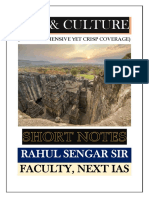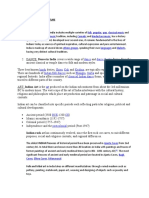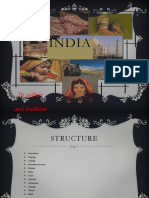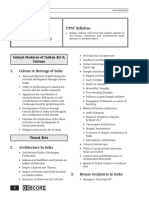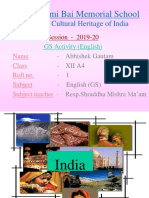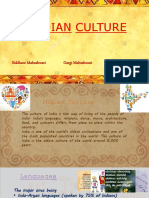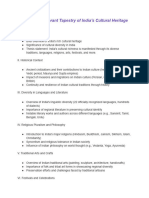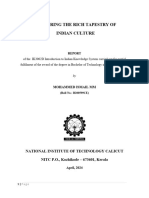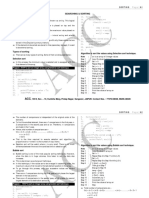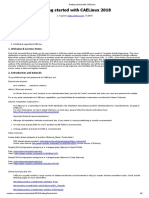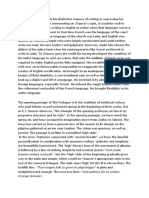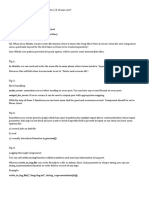0% found this document useful (0 votes)
57 views5 pagesModule 5 - Essence of Indian Traditional Knowledge
India's cultural heritage includes diverse elements such as architecture, sculpture, dance, music, theatre, painting, martial arts, festivals, and cinema, reflecting its rich history. The document outlines significant contributions of Indian culture to the world, including yoga, mathematics, and cinema, alongside modern developments in arts and culture. It highlights the evolution of various art forms and the preservation of heritage sites, showcasing India's ongoing cultural legacy.
Uploaded by
yadavjikrishna54321Copyright
© © All Rights Reserved
We take content rights seriously. If you suspect this is your content, claim it here.
Available Formats
Download as PDF, TXT or read online on Scribd
0% found this document useful (0 votes)
57 views5 pagesModule 5 - Essence of Indian Traditional Knowledge
India's cultural heritage includes diverse elements such as architecture, sculpture, dance, music, theatre, painting, martial arts, festivals, and cinema, reflecting its rich history. The document outlines significant contributions of Indian culture to the world, including yoga, mathematics, and cinema, alongside modern developments in arts and culture. It highlights the evolution of various art forms and the preservation of heritage sites, showcasing India's ongoing cultural legacy.
Uploaded by
yadavjikrishna54321Copyright
© © All Rights Reserved
We take content rights seriously. If you suspect this is your content, claim it here.
Available Formats
Download as PDF, TXT or read online on Scribd
/ 5




